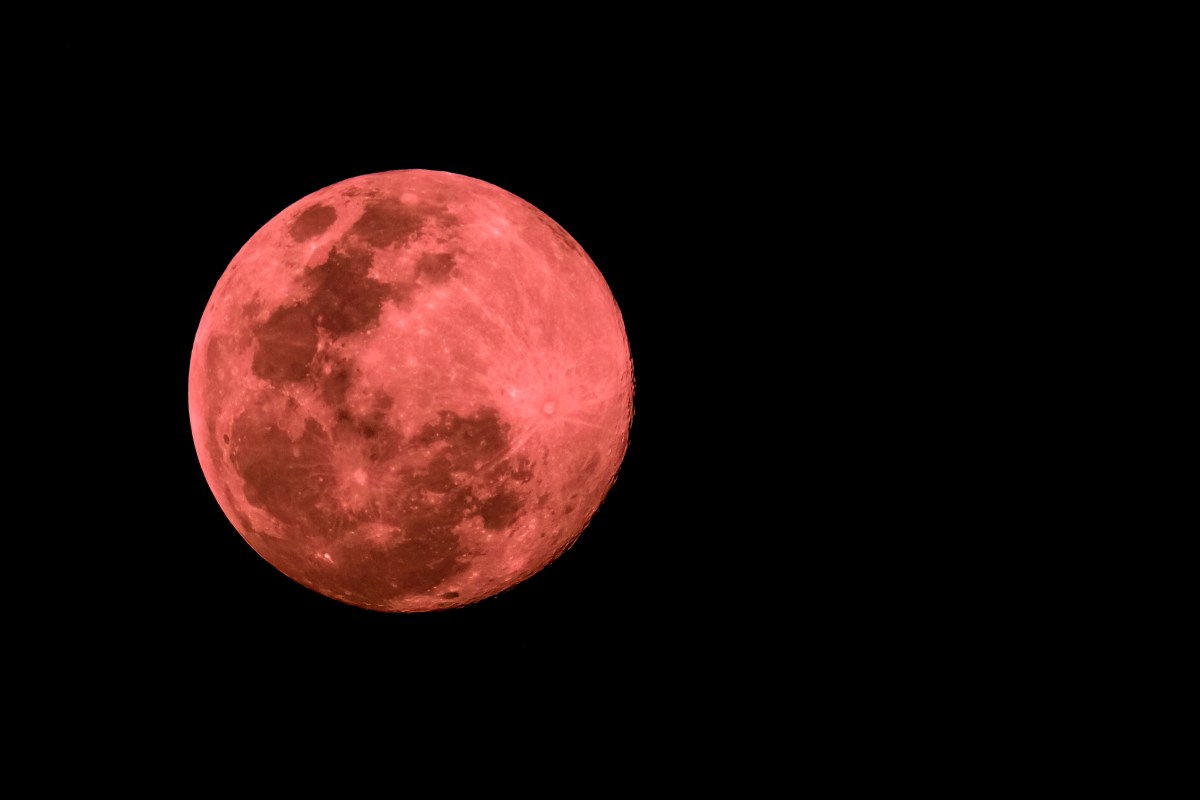Unveiling the “Blood Moon”: Understanding This Celestial Spectacle
The term “Blood Moon” refers to a fascinating celestial event during a total lunar eclipse when the moon takes on a reddish hue. NASA has recently announced the next occurrence of this rare phenomenon, stirring excitement among sky-watchers and astronomy enthusiasts alike. But what exactly causes this captivating sight? When can you catch it, and how can you make the most of your viewing experience? Let’s dive into the details!
What is a Blood Moon?
A Blood Moon occurs during a total lunar eclipse. This happens when the Earth positions itself directly between the Sun and the Moon, casting a shadow that completely covers the Moon. As sunlight passes through the Earth’s atmosphere, it scatters and bends, allowing only the longer wavelengths of light (the reds and oranges) to reach the Moon. This process gives the Moon its characteristic blood-red color during the eclipse.
Interestingly, the term “Blood Moon” has gained popularity in recent years, but this phenomenon has been observed for centuries and has been referenced in various cultures and religions. In many ancient traditions, it was seen as an omen or a significant event, reflecting humanity’s enduring fascination with the night sky.
When to Witness the Upcoming Blood Moon
NASA has confirmed that the next Blood Moon will occur on [insert date]. It will begin at [insert time] and reach its peak at [insert time]. This timing can vary based on your geographic location, so check local resources for specific details regarding visibility in your area.
To ensure you don’t miss this spectacular event, consider marking your calendar and setting reminders. Blood Moons are not frequent; they occur only a few times a year, making them a must-see for anyone interested in astronomy.
Preparing for the Blood Moon Experience
Watching a Blood Moon can be a magical experience, but preparation is key to making the most of it. Here are some tips to enhance your viewing experience:
- Find a Good Viewing Location: Choose a spot with a clear view of the horizon, away from city lights and obstructions. Parks, open fields, or elevated areas can provide an ideal vantage point.
- Check the Weather: Clear skies are essential for viewing the Blood Moon. Monitor weather forecasts leading up to the event, and have a backup plan in case of clouds.
- Bring the Right Equipment: While you can view the Blood Moon with the naked eye, binoculars or a telescope can enhance the experience, allowing you to see details on the lunar surface. A camera with a tripod can help capture stunning images of the event.
- Gather Your Friends and Family: Sharing this experience with loved ones can make it even more memorable. Consider organizing a small gathering, complete with snacks and drinks to enjoy while you watch the eclipse.
What to Expect During the Blood Moon
As the eclipse begins, you will notice a shadow gradually creeping across the Moon. This phase is known as the penumbral phase, where the Moon starts to enter the Earth’s outer shadow. It can be subtle, but it marks the beginning of a spectacular show.
Once the Moon is fully engulfed in the Earth’s umbra (the innermost part of its shadow), you’ll witness the transformation into a Blood Moon. The timing of this phase can vary, but it typically lasts around an hour. During this time, the Moon’s color will shift from bright white to a deep red, creating a stunning visual contrast against the night sky.
Scientific Significance of the Blood Moon
The Blood Moon is not just a beautiful sight; it also holds scientific significance. Astronomers study lunar eclipses to gain insights into the Earth’s atmosphere. The way light bends and scatters around the Earth provides data about atmospheric conditions, such as pollution and dust levels.
Moreover, these events can help in understanding the dynamics of our solar system. By observing the eclipse, scientists can learn more about the Moon’s orbit and its interaction with the Earth and Sun. This can lead to advancements in space exploration and our understanding of celestial mechanics.
Cultural Interpretations of the Blood Moon
- Native American Cultures: Many tribes viewed the Blood Moon as a time for reflection and renewal, often connecting it to agricultural cycles.
- Ancient Civilizations: In ancient Egypt and Mesopotamia, lunar eclipses were seen as significant omens that could predict events such as harvests or the fate of rulers.
- Modern Interpretations: In contemporary society, the Blood Moon has been linked to various spiritual beliefs and phenomena, often seen as a time for change or transformation.
Capturing the Blood Moon
If you’re inclined to document this celestial event, consider the following photography tips:
- Use a Tripod: Stabilizing your camera is crucial for low-light conditions, as you may need longer exposure times.
- Adjust Your Settings: Use a low ISO setting to reduce noise, and consider a faster shutter speed to capture the details of the lunar surface.
- Experiment with Filters: Using a neutral density filter can help balance the brightness of the Moon against the dark night sky.
Final Thoughts
Witnessing a Blood Moon is an unforgettable experience, combining the beauty of nature with the wonders of science. Whether you’re an avid astronomer or simply someone who enjoys the night sky, this event is a perfect opportunity to step outside, gaze upwards, and marvel at the universe. Mark your calendars, gather your loved ones, and prepare for a night filled with wonder and awe as you watch the enchanting Blood Moon illuminate the sky.
As the date approaches, stay informed and excited for this celestial spectacle that reminds us of the beauty and mystery of our universe!
See more Your Daily Weather



